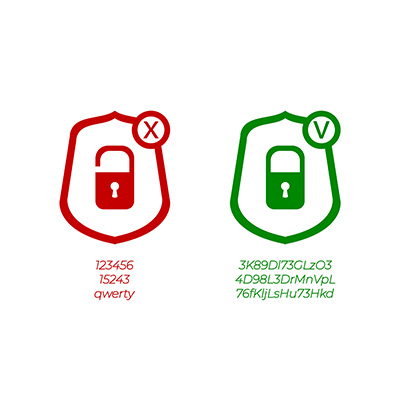For all the benefits that remote work offers, it does come with some challenges. Fortunately, there are different strategies that can be applied to help overcome them. Let’s break down something called structured problem solving, and how equipping your team members appropriately can help you with it.
Most organizations are trying to figure out how to secure their IT against the constant flood of threats out there. Unfortunately, the biggest threat out there isn’t something that you can actively protect against. Can you guess what it is? Unfortunately, it’s your employees, and their potentially lax password practices—and while you can’t really protect yourself against insecure passwords, you can minimize the likelihood that they’ll be used.
Whether or not you believe acronyms are an acceptable form of speech, some people might use them habitually or instinctively even for business communications. Of course, they don’t have much place in this context, but habits are hard to break. To address this issue, one innovative thinker has created a tool that can help determine if the acronym “LOL” is sincere or not.
Not everyone is cut out to be an entrepreneur, largely because there’s a lot that can pop up and cause problems that need to be addressed. Let’s discuss how successful business owners rally through tough times to help attain this kind of success.
Technology is complex, and it’s definitely not everyone’s cup of tea. This is more the case for business technology than consumer technology. Even those who consider themselves tech-savvy might be lost when it comes to managing business-grade technology solutions. How can you make sure that your business technology is receiving the service it needs to stay operational long-term?
Small businesses have a lot to worry about in terms of technology, but one of the things that often gets overlooked is network security. Some small businesses feel that they are too small to be considered a viable target for hackers, but they are wrong; all businesses have data valuable for hackers in some form.
When security breaches and data breaches are mentioned in the same breath so often, it’s easy to look at them as one and the same. However, we want to take a moment to explain the differentiating factors between the two, as it could be all the most important for protecting your business in the future.
We talk a lot about different types of technology, securing your technology and your accounts, and a lot of other technology-related issues on this blog, but because of the generalities of whatever technology (or strategy) we’ve chosen to write about that day, we never confront the thing that is most important to a business: How does any technology fit into what we do here? What value do we get from any type of technology? Today, we thought we’d talk a little bit about what you need to do to find the right technology for your business and how to come up with those decisions.
Simple passwords are just not an effective security practice, so if you’re still using credentials like Password, 123456, Guest, or Qwerty, listen up. You need better password hygiene practices before you suffer from a data breach. Here are some ways you can make a better password to protect your business from threats.
There’s no beating around the bush with this one; moving data from one place to another, also known as data migration, is critical to get right the first time. If you create and follow a migration strategy, evaluating here and there to make sure it’s all going according to plan, you’ll see great success in this effort. Let’s go over how you can make it happen.










